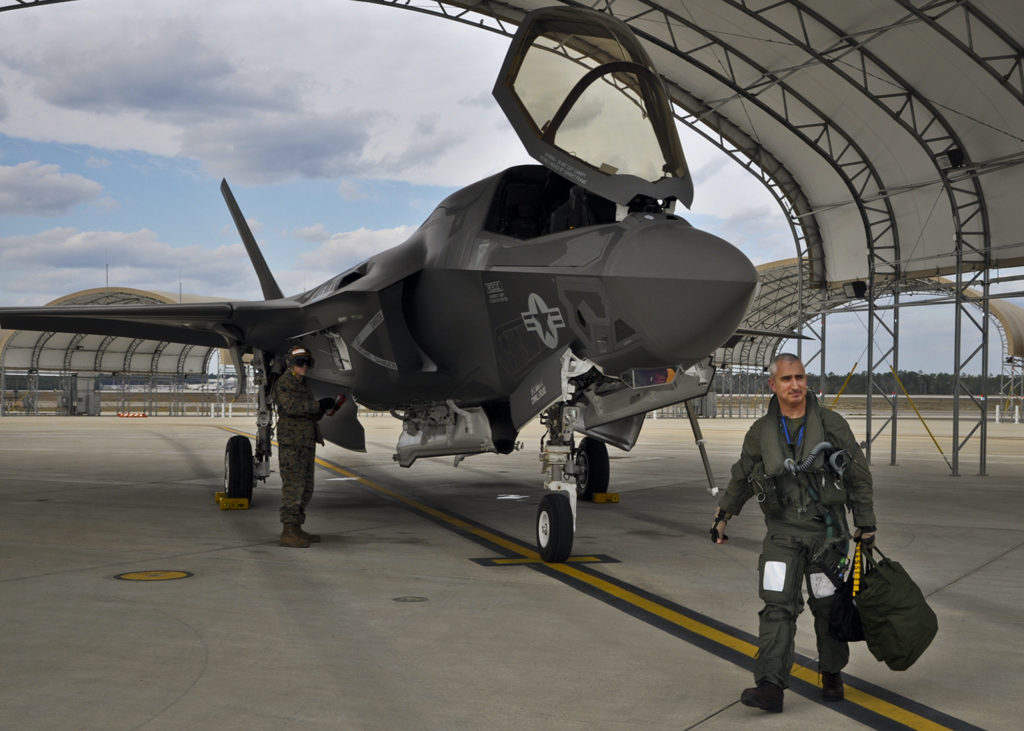Following problems with the F-35 fighter evident with the recent F-35 crash in the South China Sea, the US Department of Defense, together with the F-35 Lightning II Joint Program Office (JPO), has successfully completed the first phase of deploying new hardware for the US’ top military fighter jet.
The F-35 enterprise recently completed the deployment of new, improved logistics hardware called Operational Data Integrated Network – (ODIN). Now 75% smaller, lighter, more efficient, and less expensive 💪!
Learn more about ODIN 👇https://t.co/6QwOBop2mc
— F-35 Lightning II Joint Program Office (@theF35JPO) February 1, 2022
Advertisement
The jet, which operates on the legacy Autonomic Logistics Information Systems (ALIS), will be replaced by the more modern information system Operational Data Integrated Network (ODIN). Announced in early 2020, replacing the outdated F-35 ALIS comes as part of the Standard Operating Unit unclassified (SOU-U) server.
This new, cloud-based operating system was a massive reduction in aircraft weight as the hardware is 75% smaller and lighter. Reports have said that ODIN systems can fit into two suitcase-sized cases, replacing over 800 pounds of equipment from the previous ALIS. Processing times were also said to be greatly decreased at 50%, thus making it easier to operate. It also has the potential to host multiple squadrons on just one server, making the system more flexible for operations.
ODIN was also said to be more cost-efficient as it was reported to be 30% less costly to produce – making it more affordable for the Air Force for future manufacturing.
ODIN Base Kits (OBK) were distributed to US bases to accelerate the process of updates. These sites include the Naval Air Station Lemoore, Nellis Air Force Base, Hill Air Force Base, Eielson Air Force Base, Marine Corps Air Station Miramar, Marine Corps Air Station Beaufort, Lockheed Martin Aeronautics factory, Eglin Air Force Base, Luke Air Force Base, and the Edwards Air Force Base. OBKs were also sent to allies such as the Amendola Air Base in Italy) and Portsmouth Naval Base in the UK. With these upgrades now set, the US Air Force, Navy, and Marine Corps now enjoy a better system, eradicating what headaches the ALIS system gave them.
What Are These Operating Systems?
For those unfamiliar with these operating systems, both the ALIS and the ODIN are tactical aircraft systems that monitor and help optimize an F-35’s components. Think of it as a computer, a diagnostic computer system, where everything about an aircraft is found, including operations & training, maintenance, and even supply chains for the aircraft.

No, it is not the system that operates the F-35 itself, but the offboard mission support system supports the aircraft, collecting in-flight data that help the maintenance of the F-35 done after a mission or routine flight. These operating systems are the all-in-one system that maintains scheduled flights of the aircraft, authorized pilots to fly the aircraft, and at the same time, feeds information to Lockheed Martin to improve its functionality.
These systems monitor elements such as engine rotations, cooling functions, onboard software, avionics, and other components, reducing malfunctions and mitigating risks for inflight personnel. Navigation details, more advanced threat data, flight trajectories, and even weather conditions are also part of the system’s analysis, aiding in mission planning and execution.
The data it collects is shared within F-35 squadrons and Lockheed Martin, allowing it to predict when parts should be replaced prior to their failure in flight and how environmental conditions can affect the material readiness of the aircraft. All of this in important in terms of decreasing man-hours to keep it flying and the cost of those non-flight hours.
The ODIN is a more advanced system with a user-friendly dashboard that uses a cloud system, making it more efficient for data sharing.
F-35 administrators will be happy with the news that the first phase is complete, possibly decreasing their workload and making operations smoother. While its components are considered classified, it’s hopeful that previous issues of the older ALIS will now be solved.
ODIN is the Future
The replacement with the ODIN Base Kit started in 2021, helping solve the problematic ALIS, which has been the military’s biggest headache for the past few years. According to the Government Accountability Office (GAO), it was plagued with about 4,700 deficiencies which can be detrimental to the aircraft’s safety and security.
Some of these problems included inaccurate and missing data that signaled that an aircraft was experiencing issues when it had no issues in reality. Officials had said it was extremely bulky and had limited internet capability, and users complained about the system’s user experience, explaining that it was tremendously difficult to navigate.
The Pentagon aims to reduce the fighter jet’s operating cost to just $25,000 per flight hour by 2025, with the F-35 unit currently costing the US government over $44,000 per flight hour used. With the new ODIN system, squadrons hope to drive down costs and keep F-35s mission-ready, which the ALIS was not doing according to specifications. The Department of Defense will continue to roll out the centralized maintenance system throughout 2022, giving the US military a much-needed upgrade for years to come.










COMMENTS
You must become a subscriber or login to view or post comments on this article.